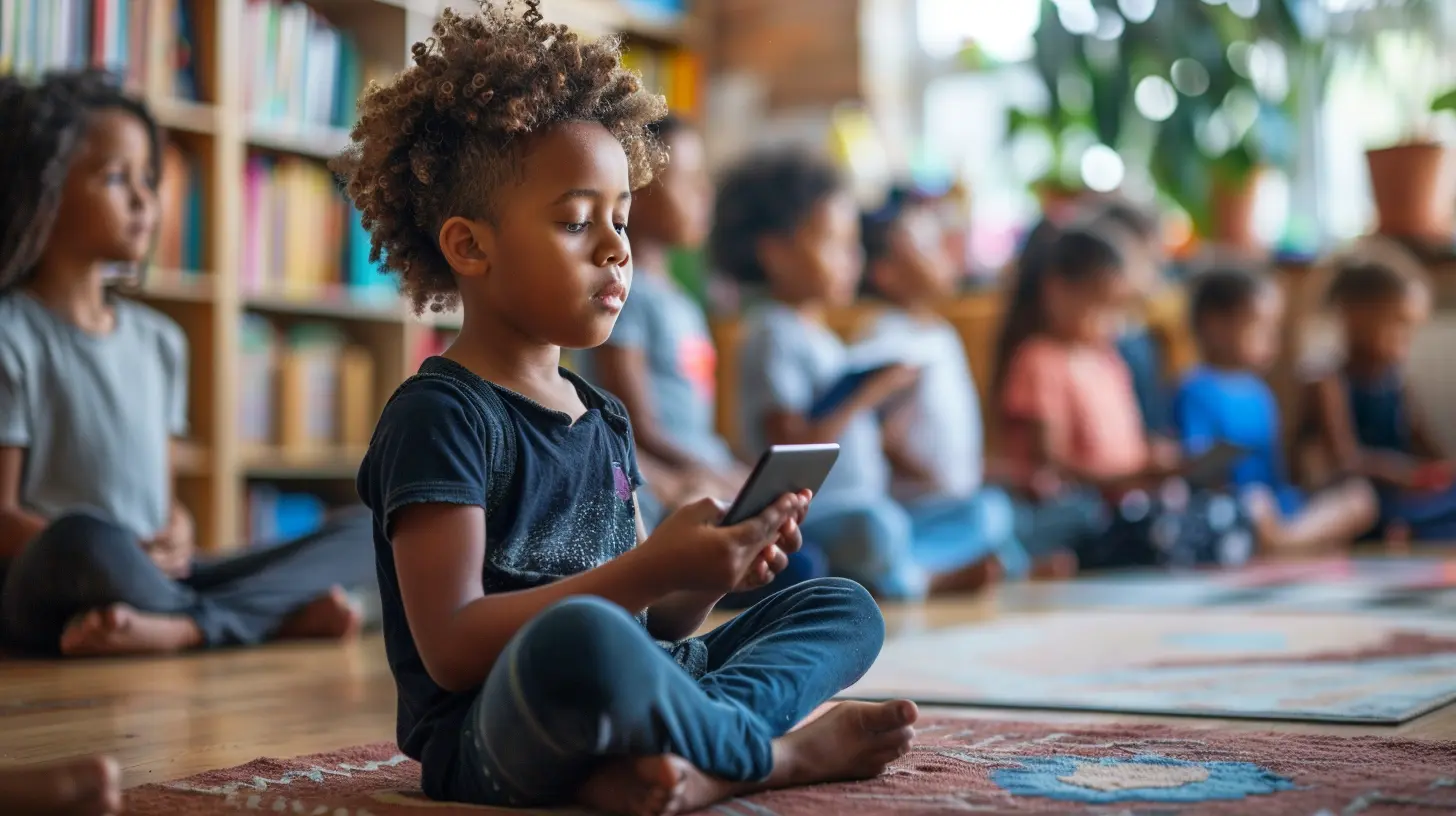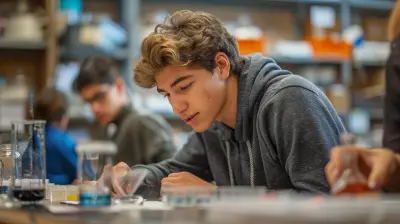21 October 2025
Let’s be honest — tech is everywhere. From the moment students wake up to the second they fall asleep, screens are a part of their lives. Classrooms aren’t spared either. Smartboards, tablets, online learning platforms, and educational apps are the new chalk and duster. But here’s the thing — while technology makes learning more exciting and accessible, it can also be a slippery slope if not used mindfully.
So, how do we strike a balance? How do we turn our classrooms into spaces where technology supports learning without taking over completely? Well, that’s where promoting mindful technology use in schools comes into play.

Why Mindful Tech Use Matters in Education
You wouldn’t give a kid a sports car without teaching them how to drive, right? The same logic applies to tech. Giving students digital tools without teaching them how to use them responsibly and thoughtfully can backfire — big time.Mindful tech use is about being present and intentional with technology. It’s not just about using tech, but about how and why it's used. When done right, it enhances learning. But when abused, it leads to distractions, screen fatigue, and even mental health issues.
Let’s dig into the details a bit more.
The Double-Edged Sword of Classroom Tech
Technology in education is a bit like having a superpower. Used wisely, it can amplify learning, make complex ideas easier to grasp, and even level the playing field for students with different needs. But if it’s misused or overused, it can become more of a burden than a blessing.Pros of Tech in Schools:
- Interactive learning: Think simulations, quizzes, multimedia lessons — way more engaging than plain lectures.- Access to resources: Students can tap into a global library of information, anytime, anywhere.
- Collaborative tools: Tech enables teamwork beyond the classroom walls via shared documents, group chats, and more.
- Personalization: AI tools and apps that adjust content to fit individual learning styles are total game changers.
Cons of Tech in Schools:
- Distraction central: One minute it’s math homework, next minute they’re watching cat videos.- Too much screen time: Leads to eye strain, sleep problems, and reduced attention spans.
- Dependency: Students may struggle to do things the “old-fashioned” way — like researching without Google.
- Cyber dangers: Online bullying, data privacy breaches, and unhealthy social media use are very real risks.

Signs That Tech Use Might Be Going Overboard
Before we talk about solutions, let’s take a quick look at warning signs. If you’re seeing any of these in your classroom (or at home), it might be time to step back and reassess:- Decreased classroom participation
- Students rushing through assignments just to “get it done”
- Constant multitasking (switching tabs every 5 seconds)
- Drop in attention span or memory retention
- More social isolation or less face-to-face interaction
- Complaints about headaches, tired eyes, or sleep problems
Sound familiar? OK then — let’s fix it.
Practical Strategies for Promoting Mindful Technology Use in Schools
Good news: You don’t need to ditch tech altogether. It’s all about using it with intention. Here are some super doable (and teacher-approved) ways to encourage more mindful tech use.1. Set Digital Boundaries — and Stick to Them
Setting clear rules and expectations is key. Not just for students, but for educators too.- Create a classroom tech policy: Lay out when it’s okay to use devices — and when it’s not.
- Encourage “device-free” times: Maybe the first 10 minutes of class are strictly for discussion — no screens allowed.
- Use tech breaks: Allow short bursts of screen time followed by offline activities. Think “Pomodoro technique” but for school.
Having these boundaries in place helps students learn when to lean on tech and when to stay unplugged.
2. Make Tech Use Purpose-Driven
Before launching into a digital activity, ask the class (and yourself), “Why are we using this tool?” If the answer is fuzzy or unclear, you might want to rethink it.- Prioritize apps/tools that align with learning objectives.
- Avoid using tech just for the sake of using it.
- Encourage students to reflect: “How did this tool help (or not help) me understand the topic better?”
It’s amazing how much more mindful students become when they understand the why behind the what.
3. Teach Digital Literacy — Early and Often
Digital literacy should be as fundamental as reading or math. It’s about teaching students to think critically about what they consume, create, and share online.- Show them how to fact-check sources.
- Talk about digital footprints and what it means to be a good “digital citizen.”
- Introduce media bias and online scams in age-appropriate ways.
When students understand the digital landscape better, they navigate it more responsibly.
4. Lead by Example
Let’s be real — students are watching us all the time. If we’re glued to our devices or constantly distracted by notifications, they notice.- Be present when teaching — minimize multitasking.
- Use tech in front of students with clear purpose.
- Talk openly about your own screen habits, both the good and the bad.
You don’t have to be perfect, but being intentional sets a powerful example.
5. Invite Student Input
Want students to actually care about mindful tech use? Let them have a say.- Ask them what helps them focus when using tech.
- Invite them to co-create digital rules for the class.
- Let them review apps or tools and share what they liked or didn’t like.
When students feel ownership, they’re way more likely to follow through.
Balancing Online and Offline Learning
Hybrid learning doesn’t have to mean all screen, all the time. In fact, the best learning happens when we weave both online and offline experiences together.Here are a few ideas:
- Offline group projects: Bring back poster-making, physical models, and brainstorming on chart paper.
- Reading physical books: Yes, they still exist — and they’re great for reducing screen time.
- Nature walks + reflection: Let students unplug and reset by connecting with the real world.
- Hands-on experiments: Think baking soda volcanoes, not just virtual lab simulations.
When tech becomes just one tool in the toolkit — not the only one — everything feels more balanced.
Encouraging Mindfulness Habits in Students
Mindful tech use is part of a bigger picture. It’s about being aware, present, and intentional in everything we do. Helping students develop these habits can be a total game changer.Here’s how to sneak mindfulness into your school day:
- Start with a 3-minute breathing exercise to set the tone.
- Introduce journaling to reflect on how tech impacts their day.
- Do body scans or screen breaks every now and then.
- Play calming music while doing offline work to reduce sensory overload.
You don’t have to go full Zen monk — just a few small steps can make a big difference.
Working with Parents and the Wider School Community
Promoting mindful tech use isn’t a solo mission. It takes a village.Teachers, parents, and school leaders need to be on the same page. Regular communication is key.
- Host digital wellness workshops for parents.
- Send home tech-use guidelines that complement classroom policies.
- Encourage device-free zones at home — like dinner time or bedrooms.
- Share resources on parental controls and healthy screen habits.
When home and school work together, students get a more consistent message. And that’s half the battle.
The Long-Term Payoff: Tech-Savvy, Self-Aware Learners
Think of mindful tech use as planting seeds. At first, it might feel like a lot of reminders and small changes. But over time, students start to get it. They become more aware of their habits, more focused in class, and more intentional in how they use digital tools.They’re not just learning with tech — they’re learning how to live with it.
And in a world where screens aren’t going anywhere anytime soon, that’s a pretty solid win.
Final Thoughts: Finding the Sweet Spot
So here we are — in the middle of a digital age, raising and educating digital natives. Technology isn’t the enemy. It’s a powerful ally, but it needs guidance. Kind of like a dragon in training — majestic and mighty, but only effective when it’s under control.Promoting mindful technology use in schools isn’t about going backward or banning devices. It’s about teaching students to pause, think, and choose wisely. About helping them understand that just because you can do something with tech, doesn’t always mean you should.
When we help students become more intentional with technology, we’re not just teaching them how to succeed in school — we’re teaching them how to thrive in life.








Zayla McAdams
Promoting mindful technology use in schools is essential for fostering a balanced educational environment. By teaching students to engage thoughtfully with digital tools, we empower them to harness technology's potential while minimizing distractions and enhancing their overall learning experience.
November 8, 2025 at 4:14 AM